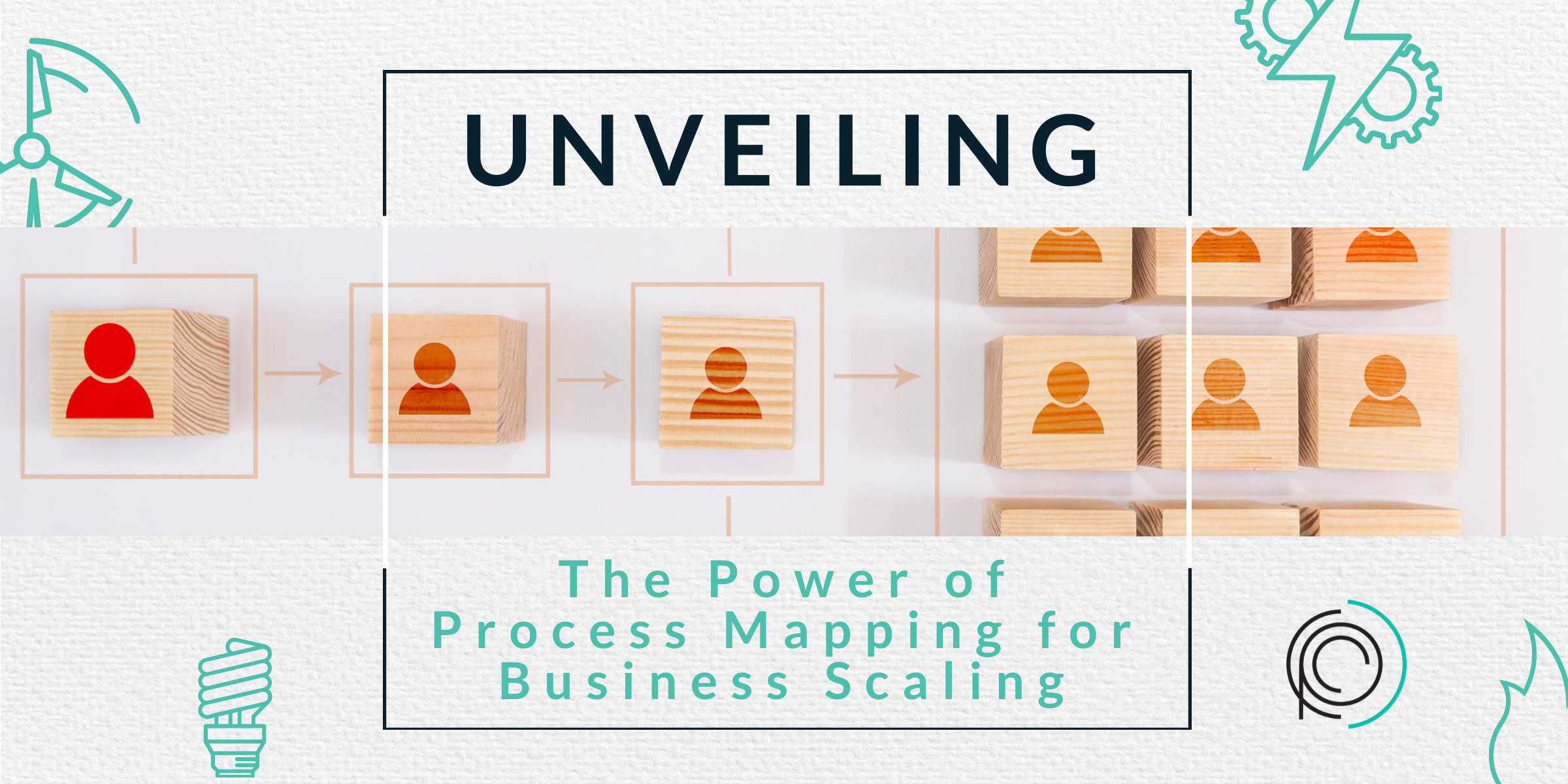Unlocking Business Potential: The Importance of Effective Tech Stack Mapping for Streamlined Operations and Enhanced Productivity
Every company relies on technology to get work done. Whether that includes Word or PowerPoint or more sophisticated tools like Netsuite or Salesforce, technology likely plays a prominent role in your day-to-day operations.
The various pieces of software that help you serve customers and facilitate internal operations constitute your tech stack. When properly assembled, your tech stack can unleash your business processes, facilitating seamless operations and fueling productivity. Conversely, adopting the wrong tools, or using ineffective software, could create the opposite effect, leading to cumbersome processes and hinder productivity.
But with the hundreds of available choices, all promising to 10x your business, how do you decide what tools complement your business growth? Technology stack mapping answer’s a lot of questions from intergrade-ability to the push and pull of information sharing between systems.
What is technology stack mapping?
To be effective, your tech stack must be appropriately suited to your people, processes, and corporate needs – it should fit your company’s corporate culture but also solve multiple issues. Technology stack mapping helps companies efficiently pick and organize their software tools.
Tech stack mapping implies two distinct processes. First, it involves an audit-like process that thoroughly evaluates a software stack. Such an audit provides a birds-eye-view into current tools, why they were adopted, and how they’re performing. We also take into consideration something referred to as Shadow IT and what role it plays in your overall technology stack and daily business operations.
Second, tech mapping actively links current or potential tools to specific company processes or needs. It helps to explain where information is being shared and where it needs to be shared. The goal is to identify what tool performs the job and enhances outcomes with the best possible utilization rates. We aim to understand not only the single source of truth but what will help your human capital serve one another and your clients best with the most accurate information.
Unfortunately, organizations often fail to bring this deliberate approach to selecting and maintaining tech stacks. Rather, the traditional instinct allows business leaders to pick software products and then build processes bases on assumptions of what they believe is wrong and what they believe to be the solution, making pertinent decisions in isolation. For example, sales feel they need better sales enablement tools, so they buy “best in class” tools without regard for how the software integrates with their existing technology both within and across departments.
You also must consider the expiry date on interconnected software when choosing a new solution. You may be relacing a sales tool but in 2 years your ERP is no longer supported what will that mean for the technology choices 2 years from now and are you comfortable with that answer. You may be forced to select a new tool because your initial investment’s integration capabilities are limited or are not an appropriate fit for your organizations needs.
As a result, the company becomes saddled with a tangled web of systems, processes, and data that is almost impossible to connect, secure, or manage. Worse, these tools are often grossly underutilized, sometimes using less than 25% of installed functionality, or they may duplicate features already available elsewhere. As a result, what started as a well-intentioned drive to purchase the best tools becomes a drain on productivity, employee satisfaction, and company resources.
Tech stacks have a real business impact, which is why successful companies deliberately map tools to processes and people before adoption and on an ongoing basis.
The interrelationship of stacked technology
As your business grows, you’ll likely find that you’re using more and more applications to support daily work. Constant technological advances are creating better and more effective solutions to business problems, so there’s no doubt that your tech stack will evolve. The idea here is not to collect a roster of technology but to select appropriate technology for your organization. It’s not about quantity but quality in this case.
Technology is not meant to work in silos. New tools might bring previously absent functionality, but they must integrate with existing tools to provide peak business value. Just like Marketing and Finance do not constitute independent entities, every piece of tech you own should converse fluently with other elements in your tech stack. Remember although each department serves it’s purpose in the organization individually they are all under the same umbrella and are interconnected with one another.
By adopting a proactive approach toward technology stack mapping, you may discover ways to save on technology costs, consolidate platforms or functionalities, improve efficiency, and add better transparency to your business.
The core premise of tech mapping is that every tool your employees use should fulfill specific parts of your business strategy. As your company grows, that strategy and its needs will expand or change in other ways. Maintaining peak efficiency and supporting employees with tools that facilitate seamless work requires constantly reviewing your apps and asking if they provide optimum value.
Benefits of technology stack mapping
With the whole-of-process view into business processes it enables, tech stack mapping facilitates a transparent and adaptable tech stack. Companies can quickly see what is working, what isn’t, and where tweaks can produce better business results. Additionally, tech stack mapping helps companies.
-
Increase efficiency: A technology stack map works similar to plumbing schematics. It clarifies the whole system, making functional gaps, broken links, or missing integrations immediately obvious. Once companies identify these gaps, they can quickly fill them to improve efficiency and ensure seamless work.
-
Reduce costs: Duplicate tools/functionality, forgotten or underutilized software, and technology you have outgrown are all financial black holes created by inefficient tech stacks. But with a comprehensive stack map, these problems can be sensibly resolved, leading to significant cost savings.
-
Increase utilization rates: When companies buy software without mapping employee and corporate needs, it can leave them with tools that employees can’t or won’t use. But an intentional approach to selecting, testing, and installing these tools can exponentially increase utilization rates. Employees are more disposed to using the tools, and, even better, they’ll have a better understanding of the tools’ functionalities and how to utilize them to their maximum capacity.
-
Improve ROI: ROI suffers when software isn’t performing at all or to its full potential. Tech stack mapping averts this by securing user and stakeholder input before adoption and continuously throughout the application’s lifecycle to ensure that the software meets expectations and delivers peak performance.
-
Supercharge growth: Lastly, a functional and practical tech stack creates the perfect atmosphere for greater productivity and innovation – the exact ingredients that help enable and sustain business growth.
Centralizing data assets in a single source of truth
Just as business units work together to accomplish company goals, tech stacks combine to deliver needed functionality that moves the business forward. A critical aspect of this is the flow of data and information throughout an organization.
While each business unit will rely on its niche software for daily operations, decisions by the board or management team will require access to a central repository that embodies the full flow of organizational information. Apart from this, effective interdepartmental collaboration will often mean being able to plug into their respective data banks for shared visibility of information and priorities.
One of the ways that tech stack mapping enables a single source of truth is through the data flow map. Whether through a single ERP platform or creative integrations between macro applications, a data flow map can monitor, evaluate, or design how each system in the tech stack communicates with others, including data exchanged and available functionalities.
Frequently, the speed and quality of decisions depend on the availability of valuable real-time data. Tech mapping experts employ the data flow map to ensure that current and high-value information is readily available when required.
Other maps that a process optimization expert can help design include:
-
System map: The system map helps evaluate how a company’s tech stack supports its core business and if any missing or duplicate functions affect business success. It is organized by the various functions and roles within the sales process.
-
Experience map: The experience map plays the same role as the system map but from a buyer’s perspective. It helps organizations see how customers engage with various tools at different stages and their role in eventual conversion. An experience map’s visibility will be invaluable for optimizing the customer experience.
-
Workflow map: This map focuses on internal processes and assesses how teams work and how the tech stack supports their daily work.
Ultimately, a well-optimized tech stack holds the keys to better business outcomes and a productive work environment. Companies looking to optimize their tech stack can take the first step by engaging with a process and tech mapping expert who will perform an in-depth review of their current stack, identify inefficiencies, and design a stack that moves their business forward.
If you still have questions about technology stack mapping or would like additional information you can check out other articles on our blog and download some of our available resources in the resource section. If you’d like to discuss how technology stack mapping can help your company, contact one of our experts today.







